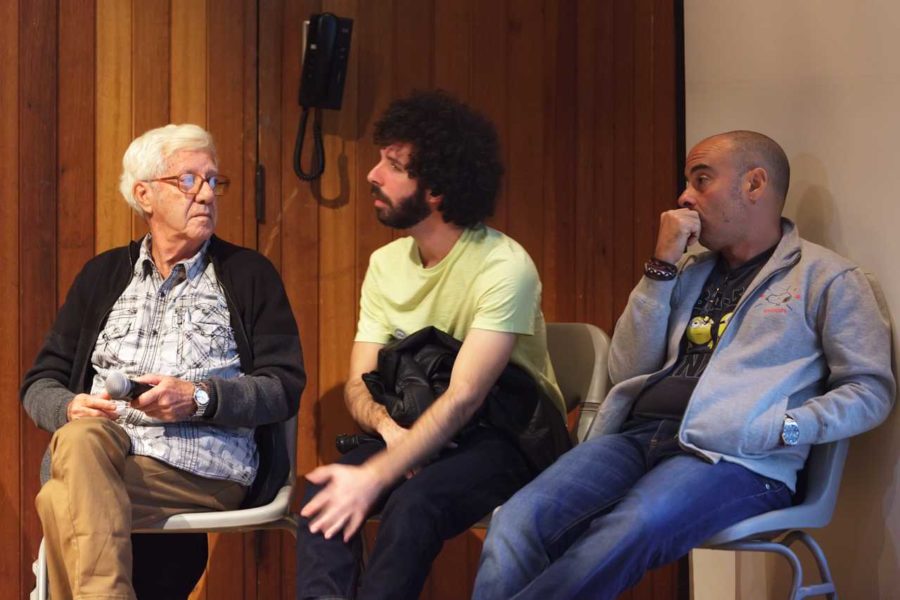A recounting of an ancient African tale. Innocent natives trying to escape from an evil colonist. A man struggling to take care of the house while his wife is out.
These were some of the cartoons shown noon Sept. 14 in the Santa Rosa Junior College’s Newman Auditorium during a special presentation of the works of Mario Rivas, his son Daniel Rivas and Manuel “Kiki” Guerra – three Cuban animators who presented their art while speaking about their experiences. Walter “Clay” Atchison, adjunct faculty for 3D computer animation, hosted the event, introducing each clip and asking questions to the animators in between.
All three opened up about their backgrounds. Rivas Sr. has been animating the longest, directing since 1973. His inspirations were films such as Disney’s classic “Pinocchio.” He mentioned an appreciation for European films as well. Guerra’s shown work had a great deal of anime influence, and he cites Frank Millar’s comic “Sin City.” Cuba apparently has no school for animation; so all three were self-taught. Rivas Jr. freely admits he learned a lot from his father.
The cartoons took up most of the runtime, and they covered a wide range of genres, from action pieces to kid-friendly cartoons reminiscent of Looney Toons to adult humor. Many of them were also extremely stylized; such as “In the Land of Chango,” which extensively used an early method of motion capture called retroscoping, and “Redemption,” which combined live-action with animation.
The animations were products of a long range of time; the earliest was made more than 30 years ago; the latest in 2007. The order was to illustrate how Cuban cartoons have changed over the years from hand drawing to computer animation.
Due to the relatively brief length of time allotted to the presentation, most cartoons were not shown in their entirety. All films were released by the Cuban Institute of Cinematographic Art and Industry.
SRJC’s 3D Animation Program and Art Department hosted the free public event. The Charles M. Schulz Museum co-sponsored, and also had an animation workshop featuring the animators Sept. 12.




